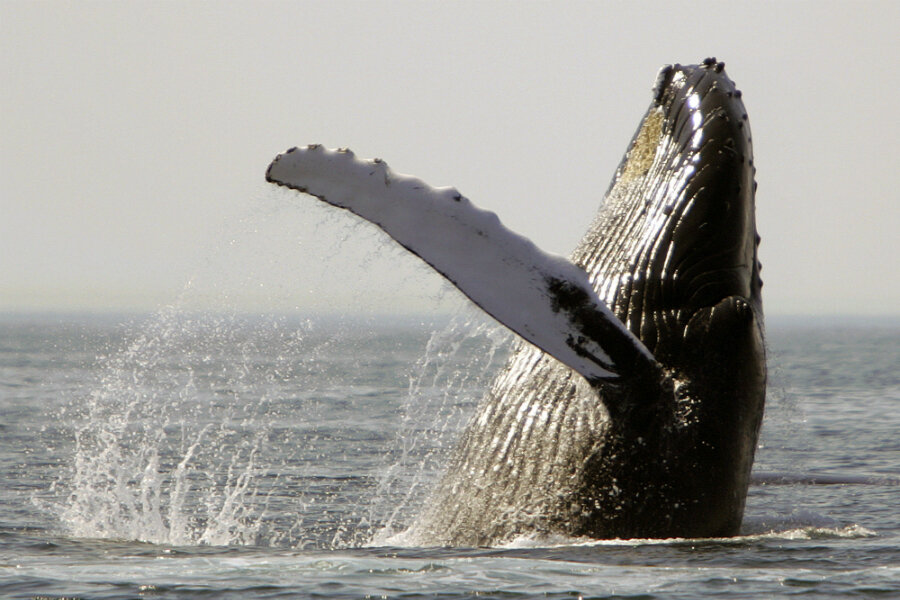A whale of a success story: Humpbacks exit endangered species list
Loading...
On Tuesday, federal authorities removed nearly all populations of humpback whales from the endangered species list, as one of the Earth's largest mammals has bounced back from the effects of widespread commercial whaling and other environmental dangers.
The clearance for the majority of humpback whales joins another conservation announcement this week, which removed giant pandas from the endangered species list. Together, the changes mark a significant moment of progress for conservation efforts around the world after nearly half a century of protecting two of the most iconic symbols of the movement. But conservationists still warn that despite the hard-won victories, the species remain vulnerable.
"Today's news is a true ecological success story," Eileen Sobeck, the assistant administrator for fisheries at the National Oceanic and Atmospheric Administration, said in a statement.
Part of the delisting has to do with the fact that all humpback whales species were previously listed under one category on the endangered species lists, since first appearing on it in 1970. Nine of the 14 populations of humpback whale species, including those that winter in Hawaii, the West Indies, and Australia, no longer need Endangered Species Act protection, while the whales that breed off Mexico and feed off California, the Pacific Northwest, and Alaska will be listed as "threatened."
Fishermen in Hawaii, who see the estimated 11,000 humpback whales that breed in Hawaii each winter and migrate to Alaska to feed during the summer, have been pushing for the whales to be removed from the endangered species list for years.
"We just saw a lot of whales. So we thought this is a success in ocean management and we wanted to point that out to the world – that things are good with whales in Hawaii," said Phil Fernandez, president of the Hawaii Fishermen's Alliance for Conservation and Tradition.
But not everyone agrees that it was time for the whale's status to change.
Whales still face many threats, despite being protected by the National Marine Fisheries Service's moratorium on whaling that began in 1966 and by the Marine Mammal Protection Act, which insists boats stay a specific distance away from humpback whales in Hawaii and Alaska.
"These whales face several significant and growing threats, including entanglement in fishing gear, so ending protections now is a step in the wrong direction," Kristen Monsell, an attorney with the Center for Biological Diversity, said in a statement.
A similar dichotomy can be seen in panda conservation efforts. While one group of conservationists touts the giant panda's recent success, another says reports of panda counts have been exaggerated.
Pandas have bounced back with the help of expensive political and financial resources from the Chinese government and the World Wildlife Foundation, despite their fickle reproduction habits and a 99-percent bamboo diet.
"It is too early to conclude that pandas are actually increasing in the wild – perhaps we are simply getting better at counting wild pandas," Marc Brody, senior adviser for conservation and sustainable development at China's Wolong Nature Reserve, told National Geographic.
While humpback whales and giant pandas still face threats in the wild, they have proven that conservation and protection work in stabilizing a population.
"To be able to bring a species to a point where their population is doing well and they no longer meet those requirements to be on the endangered species act, I think that is a really important success for us as a nation," Donna Wieting, the director of the National Oceanic and Atmospheric Administration's Office of Protected Resources, said during a news conference in 2015, when the idea of taking humpback whales off the endangered species list was first proposed.
"So I think it's quite a big deal," she added.
This report includes material from the Associated Press.






